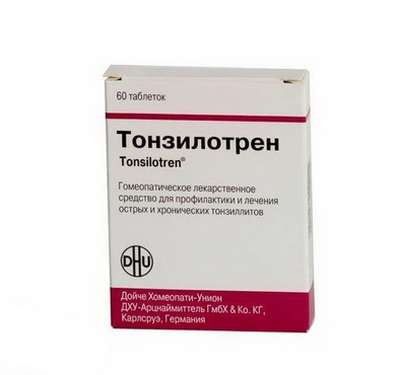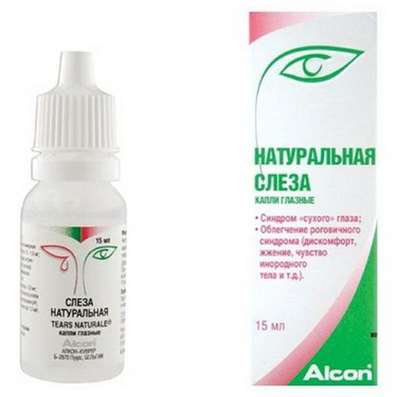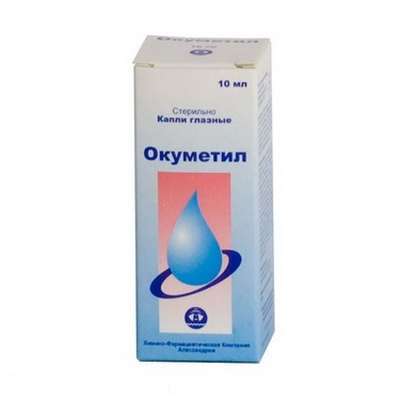Instruction for use: Metalyse
I want this, give me price
Dosage form: Lyophilizate for the preparation of a solution for intravenous administration
Active substance: Tenecteplasum
ATX
B01AD11 Tenecteplase
Pharmacological group
Fibrinolytics
The nosological classification (ICD-10)
I21 Acute myocardial infarction: Myocardial infarction in the acute phase; Acute Myocardial Infarction; Myocardial infarction with pathologic Q wave and without; Myocardial infarction complicated by cardiogenic shock; Infarction left ventricular; Transmural myocardial infarction; Myocardial infarction netransmuralny (subendocardial); Netransmuralny myocardial infarction; Subendocardial myocardial infarction; The acute phase of myocardial infarction; Acute myocardial infarction;Sub-acute phase of myocardial infarction; Subacute phase of myocardial infarction; Thrombosis of the coronary arteries (the arteries); Threatened myocardial infarction; Myocardial infarction without Q wave
Composition and release form
Lyophilizate for the preparation of a solution for intravenous administration 1 vial.
Tenecteplase 30 mg (6 thousand units *)
Excipients: arginine; Phosphoric acid 85%; Polysorbate 20
Solvent: water for injection - 6 ml
In bottles of colorless glass type I with a plastic protective cover gray, complete with a solvent in a plastic syringe, disposable needle and adapter for 30 mg; In a pack of cardboard 1 bottle.
Lyophilizate for the preparation of a solution for intravenous administration 1 vial.
Tenteplase 40 mg (8 thousand units *)
Excipients: arginine; Phosphoric acid 85%; Polysorbate 20
Solvent: water for injection - 8 ml
In bottles of colorless glass type I with a plastic protective cover of a yellow-green color, complete with a solvent in a plastic syringe, a disposable needle and adapter for 40 mg; In a pack of cardboard 1 bottle.
Lyophilizate for the preparation of a solution for intravenous administration 1 vial.
Tenteplase 50 mg (10 thousand units *)
Excipients: arginine; Phosphoric acid 85%; Polysorbate 20
Solvent: water for injection - 10 ml
1 ml of the finished solution = 5 mg (1 thousand units *)
In bottles of colorless glass type I with a plastic protective cover in red, complete with a solvent in a plastic syringe, a disposable needle and adapter for 50 mg; In a pack of cardboard 1 bottle.
* Tenecteplase activity is measured in units of action (ED), calculated using a special standard of tenecteplase activity and incompatible with the units of measurement of other thrombolytic agents.
Description of dosage form
Lyophilizate for the preparation of a solution for intravenous administration in the form of a white or pale yellow mass, almost odorless.
Characteristic
Fibrinolytic preparation, recombinant plasminogen activator, genetically modified.
Pharmachologic effect
Mode of action - Fibrinolytic.
Pharmacodynamics
Tenecteplase is a recombinant fibrin-specific plasminogen activator, a derivative of the natural tissue plasminogen activator modified in three sites.
Tenecteplase binds to the fibrin component of the thrombus and selectively catalyzes the transformation of the thrombosed plasminogen into plasmin, which destroys the fibrin base of the thrombus. In comparison with the natural tissue plasminogen activator, tenecteplase has a higher affinity for fibrin and resistance to the inactivating action of the endogenous inhibitor of the plasminogen activator I.
After the introduction of tenecteplase, a dose-dependent intake of α2-antiplasmin (plasmin inhibitor in the liquid phase) is observed, followed by an increase in the concentration of systemic plasmin, which corresponds to the expected effect of plasminogen activation. In comparative studies, patients who received the maximum dose of tenecteplase (10,000 units, equivalent to 50 mg) reported a decrease in fibrinogen concentration of less than 15%, a plasminogen concentration of less than 25%, and the use of alteplase led to a decrease in the fibrinogen and plasminogen concentration by approximately 50%. After 30 days after the beginning of the use of the metalase, antibodies to tenecteplase were not detected.
Angiographic data show that a single intravenous injection of tenecteplase promotes recanalization of the artery, because of thrombosis of which acute myocardial infarction developed. This effect is dose-dependent. The use of tenecteplase reduces the death rate from myocardial infarction (by 6.2% after 30 days). When using tenecteplase, the frequency of bleeding (excluding intracranial) is 26.4% (lower than with the use of alteplase - 28.9%). Therefore, the need for transfusion therapy with the use of tenecteplase is significantly lower (4.3% in the tenecteplase group and 5.5% in the alteplase group). The incidence of intracranial hemorrhage was 0.93% in the tenecteplase group and 0.94% in the alteplase group. In cases where treatment was started later than 6 hours after the onset of symptoms of myocardial infarction, the use of tenecteplase (in comparison with alteplase) had advantages in terms of 30-day mortality (4.3% in the tenecteplase group and 9.6% in the alteplase group ), Stroke rates (0.4% and 3.3%, respectively) and intracranial hemorrhage rates (0% and 1.7%, respectively).
Pharmacokinetics
Metabolism and excretion
Tentexteplase is excreted from the bloodstream by binding to receptors in the liver and degradation to form small peptides.
After a single injection of tenecteplase in patients with acute myocardial infarction, a two-phase excretion of tenecteplase antigen from plasma was noted. When the drug is used in therapeutic doses, there is no dependence on the nature of excretion of tenecteplase from the administered dose.
The initial T1 / 2 is (24 ± 5.5) min (mean ± standard deviation), which is 5 times larger than the T1 / 2 natural tissue plasminogen activator. The final T1 / 2 is (129 ± 87) min; Plasma clearance - (119 ± 49) ml / min.
Pharmacokinetics in special clinical cases
With increased body weight, there is a moderate increase in the plasma clearance, with an increase in age, a decrease in this indicator. In women, plasma clearance is usually lower than in men, which may be due to lower body weight in women.
Tenecteplase is excreted with bile, so it is assumed that there are no changes in pharmacokinetics in renal dysfunction.
Studies of pharmacokinetics for violations of liver function were not performed.
Indication of the drug Metalyse
Thrombolytic therapy in acute myocardial infarction.
Contraindications
Hypersensitivity to tenecteplase or other component of the drug;
Diseases accompanied by significant bleeding during the last 6 months;
Hemorrhagic diathesis;
Simultaneous reception of oral anticoagulants (INR> 1.3);
CNS diseases in the anamnesis (neoplasms, aneurysm, surgical intervention on the brain and spinal cord);
Severe uncontrolled hypertension;
Major surgical interventions, biopsy of the parenchymatous organ, or significant trauma during the last 2 months (including trauma in combination with acute myocardial infarction at the present time), recently transferred to ITC;
Prolonged or traumatic cardiopulmonary resuscitation (> 2 min) during the last 2 weeks;
Severe violation of liver function, incl. Hepatic insufficiency, cirrhosis, portal hypertension (including varicose veins of the esophagus) and active hepatitis;
Diabetic hemorrhagic retinopathy or other hemorrhagic eye diseases;
Peptic ulcer of the stomach or duodenum in the phase of exacerbation;
An aneurysm of an artery or presence of an arterial / venous malformation of vessels;
With a high risk of bleeding;
Acute pericarditis and / or subacute bacterial endocarditis;
Acute pancreatitis.
When prescribing Metaleze®, you should carefully evaluate the degree of presumed benefit and possible risk of bleeding in the following cases:
SAD> 160 mm Hg. P.
Stroke or transient cerebral circulation in the anamnesis;
Recent bleeding from the gastrointestinal tract or genitourinary tract (within the last 10 days);
Cerebrovascular diseases;
Newly performed IM injection (within the last 2 days);
Elderly age over 75;
Low body weight (<60 kg).
Pregnancy and breast-feeding
Experience with the use of Metaleza in pregnancy is absent. There is no data on excretion of tenecteplase with breast milk.
If it is necessary to prescribe the drug in the case of development of acute myocardial infarction during pregnancy or lactation (breastfeeding), the prospective benefit for the mother and the degree of possible risk to the fetus or the child should be correlated.
Side effects
The most common side effect associated with the use of Metalyse® is bleeding. The types of hemorrhage associated with thrombolytic therapy can be divided into two large groups:
- external (usually from the sites of puncture of blood vessels);
- Internal: gastrointestinal, pulmonary and hemorrhages from the genitourinary tract, hemopericardium, hemorrhages in the retroperitoneal space and the brain (with the development of appropriate neurological symptoms, such as inhibition, aphasia, convulsions). In patients with stroke and intracranial hemorrhage, cases of death and persistent disability are described.
Very often (> 1/10) - external bleeding (usually from puncture sites or from damaged blood vessels), reperfusion arrhythmias, lowering blood pressure.
Often (> 1/100, but <1/10) - ecchymosis, epistaxis, gastrointestinal bleeding, nausea, vomiting, bleeding from the genitourinary tract, fever, the need for blood transfusion.
Infrequently (> 1/1000, but <1/100) - intracranial hemorrhage, thromboembolism, pulmonary hemorrhage, hemorrhage in the retroperitoneal space, anaphylactoid reactions (rash, urticaria, bronchospasm, laryngeal edema).
Rarely (> 1/10000, but <1/1000) is a hemopericard.
Very rarely (<1/10000) is the embolization of cholesterol crystals.
Interaction
There is no evidence of the presence of a clinically significant interaction of Metalyse with other drugs often used in patients with acute myocardial infarction.
Drugs that alter coagulation properties of blood, as well as drugs that affect platelet function, can increase the risk of bleeding if they are used before, at the same time, or after the appointment of Metalyse.
Pharmaceutical interaction
The drug is incompatible with solutions of dextrose.
The injectable solution of Metalyse® should not be mixed with other medications.
Dosing and Administration
IV. The dose of the drug is calculated depending on the body weight; The maximum dose should not exceed 10,000 units (50 mg of tenecteplase). The volume of the solution for the administration of the required dose is calculated according to the table.
| Body weight, kg | Tenecteplase, ED | Tenecteplase, mg | Volume of the prepared solution, ml |
| <60 | 6000 | 30 | 6 |
| ≥60, íî <70 | 7000 | 35 | 7 |
| ≥70, íî <80 | 8000 | 40 | 8 |
| ≥80, íî <90 | 9000 | 45 | 9 |
| ≥90 | 10000 | 50 | 10 |
The required dose of the drug is administered by rapid single-shot IV injection for 5-10 seconds. The previously established catheter for intravenous administration of only 0.9% sodium chloride solution can be used to administer Metalyse®. After the administration of the Meta-lize® catheter, it must be rinsed before it is used again for the administration of other drugs.
For the efficacy of therapy with Metalyse ®, the use of acetylsalicylic acid and heparin is necessary. These drugs should be administered immediately after the diagnosis of acute myocardial infarction to prevent thrombosis.
The use of acetylsalicylic acid should be started immediately after the detection of symptoms of acute myocardial infarction and continue, at least until the patient is discharged from the hospital. The recommended initial dose for oral administration is 150-325 mg / day. If the patient cannot swallow the pill, the initial dose of 150-250 mg of acetylsalicylic acid can be administered iv. The dose of acetylsalicylic acid in the following days is determined by the attending physician.
The administration of heparin must begin immediately after confirmation of the diagnosis of acute myocardial infarction and continue for at least 24 hours. The dose of heparin is calculated depending on the body weight. For patients with a body weight of 67 kg or less, the initial single dose of heparin for IV injection should not exceed 4000 units, followed by infusion of heparin at a rate of 800 U / h. For patients with a body weight of more than 67 kg, the initial single dose of heparin for IV administration should not exceed 5000 units, followed by infusion of heparin at a rate of 1000 U / h. Do not administer an initial dose of heparin for IV administration to patients already receiving heparin. The rate of infusion of heparin should be adjusted to maintain the APTT at 50-75 s (1.5-2.5 times the control time or plasma heparin content 0.2-0.5 U / ml).
Preparation of solution for intravenous administration
To dissolve Metalyse®, add the full volume of water for injection contained in the supplied syringe into the vial of powder.
1. Ensure that the vial has a volume sufficient to prepare the drug solution in accordance with the patient's body weight.
2. Check the integrity of the vial cap.
3. Open the protective cap of the vial.
4. Remove the protective cap from the syringe. Then immediately screw the supplied syringe onto the adapter for the vial and pierce the tip of the adapter with the tip of the bottle in the center.
5. Slowly pressing the plunger of the syringe, add water to the bottle for injection, avoid the appearance of foam.
6. Dissolve the powder by gently rotating the vial.
7. The prepared solution should be clear, colorless or pale yellow. For administration, only a clear solution that does not contain visible particles can be used.
8. Immediately before use, flip the vial with the syringe attached to it so that the syringe is at the bottom.
9. Enter into the syringe the necessary volume of the prepared solution, calculated depending on the patient's body weight.
10. Disconnect the syringe from the vial adapter.
11. Metalyse® should be administered IV for 5-10 seconds. For the administration of Metalyse®, do not use a catheter through which dextrose (glucose) has been administered.
12. The unused solution must be disposed of.
Dilution of the drug can also be carried out with the attached needle.
Overdose
Symptoms: an overdose of the drug may increase the risk of bleeding.
Treatment: in case of prolonged significant bleeding, a blood transfusion may be required.
Special instructions
The purpose of Metylase® should be performed by a physician with experience in thrombolytic therapy and the ability to monitor its effectiveness. This does not exclude the possibility of using Metalysee® at the prehospital stage. Like other thrombolytic agents, the administration of Metalyse® is recommended in settings where standard reanimation equipment and drugs are available.
The most common complication associated with the use of Metalyse® is bleeding. The simultaneous use of heparin may contribute to bleeding. After the dissolution of fibrin as a result of the use of Metalyse, bleeding can occur in places of recently performed punctures and injections. Therefore, thrombolytic treatment requires careful monitoring of the zones of possible bleeding (including the site of insertion of the catheter, arterial and venous punctures, incisions and injections). Avoid the use of rigid catheters, intravenous injections and unreasonable manipulations during treatment with Metalyse. In the event of serious bleeding, especially intracranial hemorrhage, the simultaneous administration of heparin should be discontinued immediately. It should be remembered about the possibility of administering a protamine if heparin was administered within 4 hours before bleeding occurred. In rare cases, when listed conservative treatment measures are ineffective, administration of transfusion drugs may be indicated. Transfusion administration of cryoprecipitate, fresh frozen plasma and platelets can be prescribed in accordance with clinical and laboratory parameters, determined repeatedly after each administration. Infusion of cryoprecipitate is desirable to be carried out until the concentration of fibrinogen is about 1 g / l. It is also possible to use antifibrinolytic agents.
Coronary thrombolysis can be accompanied by the occurrence of arrhythmia associated with reperfusion.
The experience of using glycoprotein IIb / IIIa antagonists during the first 24 hours after initiation of treatment is not available.
The use of Metalyse® may be accompanied by an increased risk of thromboembolic complications in patients with left heart thrombosis, incl. With mitral stenosis or atrial fibrillation.
The formation of antibodies to the tenecteplase molecule after treatment has not been revealed. However, there is no experience of re-use of Metalyse®.
The physical and chemical properties of the prepared solution are stable for 24 hours at a temperature of 2 to 8 ° C and for 8 hours at a temperature of 30 ° C. From a microbiological point of view, the solution should be used immediately after preparation. If the solution has not been used immediately, the period and conditions of its storage before use go under the responsibility of the doctor prescribing the drug. Usually the shelf life does not exceed 24 h at a temperature of 2 to 8 ° C and 8 h to 30 ° C.
Storage conditions of the drug Metalyse
In the dark place at a temperature not higher than 30 ° C.
Keep out of the reach of children.
The shelf life of the drug Metalyse
Lyophilizate for the preparation of a solution for intravenous administration of 30 mg - 2 years. Solvent - 3 years.
Lyophilizate for the preparation of a solution for intravenous administration of 40 mg - 2 years. Solvent - 3 years.
Lyophilizate for the preparation of a solution for intravenous administration 50 mg - 2 years. Solvent - 3 years.
Do not use beyond the expiration date printed on the package.

 Cart
Cart





